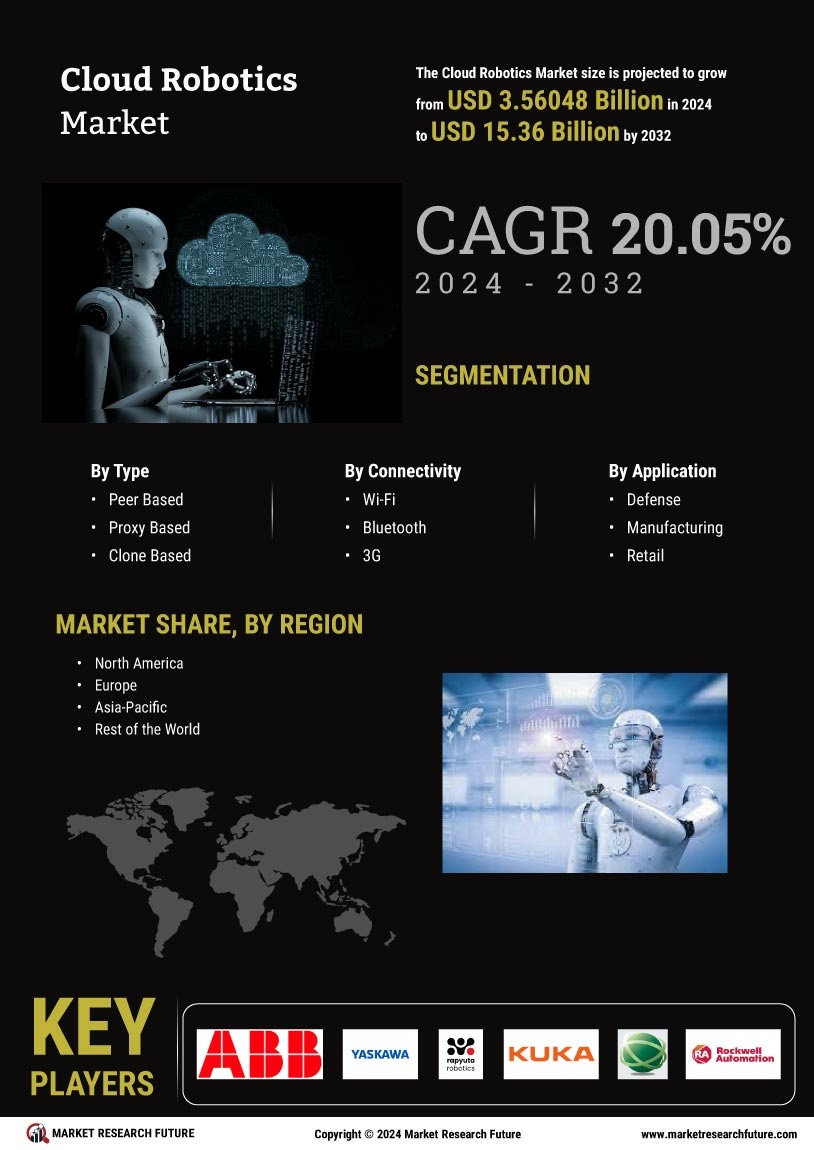Growing Demand for Automation Solutions
The Cloud Robotics Market is experiencing a surge in demand for automation solutions across various sectors. Industries such as manufacturing, logistics, and healthcare are increasingly adopting robotic systems to enhance operational efficiency and reduce labor costs. According to recent data, the automation market is projected to reach a value of approximately 200 billion dollars by 2026, indicating a robust growth trajectory. This demand is driven by the need for improved productivity and the ability to perform complex tasks with precision. As organizations seek to streamline their processes, the integration of cloud robotics becomes essential, allowing for real-time data processing and remote management. Consequently, this trend is likely to propel the Cloud Robotics Market forward, as businesses recognize the potential of automation to transform their operations.
Increased Focus on Safety and Compliance
The Cloud Robotics Market is also shaped by an increased focus on safety and compliance regulations. As robotic systems become more prevalent in workplaces, ensuring their safe operation is paramount. Regulatory bodies are establishing guidelines to govern the use of robotics, particularly in sectors such as healthcare and manufacturing. This emphasis on safety is driving companies to invest in cloud robotics solutions that can provide real-time monitoring and compliance reporting. By utilizing cloud technologies, organizations can ensure that their robotic systems adhere to safety standards while also optimizing performance. This trend is likely to enhance the credibility of the Cloud Robotics Market, as businesses prioritize safety and compliance in their operational strategies.
Advancements in Cloud Computing Technologies
The Cloud Robotics Market is significantly influenced by advancements in cloud computing technologies. The proliferation of high-speed internet and the development of robust cloud infrastructures have enabled the seamless integration of robotics with cloud platforms. This integration facilitates the storage and processing of vast amounts of data, which is crucial for the effective functioning of robotic systems. As cloud computing continues to evolve, it is expected that the capabilities of cloud robotics will expand, allowing for more sophisticated applications in various fields. For instance, the ability to leverage machine learning algorithms in the cloud can enhance the decision-making processes of robots, making them more autonomous and efficient. This technological evolution is likely to drive the growth of the Cloud Robotics Market, as businesses increasingly rely on cloud-based solutions for their robotic needs.
Emergence of Smart Cities and Infrastructure
The emergence of smart cities and infrastructure is a pivotal driver for the Cloud Robotics Market. As urban areas evolve, there is a growing need for intelligent systems that can manage resources efficiently and improve the quality of life for residents. Cloud robotics plays a crucial role in this transformation by enabling the deployment of autonomous systems for tasks such as traffic management, waste collection, and public safety. Recent projections suggest that investments in smart city technologies could reach 1 trillion dollars by 2025, highlighting the vast potential for cloud robotics applications. This trend not only fosters innovation but also creates opportunities for collaboration between technology providers and urban planners. As cities continue to embrace smart technologies, the Cloud Robotics Market is poised for substantial growth.
Rising Investment in Research and Development
Investment in research and development is a key driver of the Cloud Robotics Market. Companies and governments are allocating substantial resources to explore innovative robotic solutions that leverage cloud technologies. This investment is aimed at enhancing the capabilities of robots, making them more adaptable and intelligent. Recent statistics indicate that R&D spending in the robotics sector is expected to exceed 50 billion dollars by 2025, reflecting a strong commitment to advancing robotic technologies. As new breakthroughs emerge, they are likely to create novel applications for cloud robotics, ranging from autonomous vehicles to smart manufacturing systems. This focus on innovation not only fosters competition among industry players but also accelerates the overall growth of the Cloud Robotics Market.


















Leave a Comment